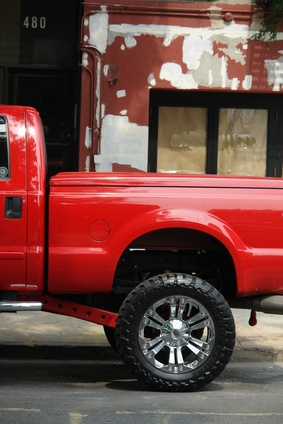
Correct wheel alignment is critical for proper vehicle operation. If the alignment on your Toyota Matrix is incorrect, it will have many concerns while driving, such as the vehicle pulling to one side, shimmy, or shake. In addition, tires on a vehicle with misaligned wheels will wear out much quicker, because the tires are not at the correct angle with the road. When your Matrix is correctly aligned, it will also get better fuel mileage because there is less rolling resistance while driving.
Ride height is the first measurement to be taken during alignment. Changes to the ride height can change other suspension angles, so it is critical that it be set correctly. On a two-wheel drive Matrix, the front height from the ground to the bottom of the center bolt in the lower control arm specification is 3.5 inches. On an all wheel drive Matrix, the same measurement is 3.27 inches. Measure the rear from the rear axle beam set bolt. Its specification is 1.61 inches for a two-wheel drive, and 1.5 inches in the front wheel drive.
Toe measures how much the wheels turn in towards each other at the front. The specification for the front wheels is 0 degrees with an allowed variance of 0.2 degrees. In inches, this means that the front of the wheels can be closer together in the front by 0.2mm, or further apart by 0.2mm. Measurement is generally done in degrees, as that allows a technician to split up the measurement between both sides. The specification is the same for two-wheel and all-wheel drive.
On the two-wheel drive Matrix, the front camber setting is -0.57 degrees, with an allowable variance of 0.75 degrees. This is to say the wheels tip in at the top slightly. An all-wheel drive specification is -0.48 with the same allowable variance of 0.75 degrees.
The front caster on a two-wheel drive Matrix is 2.78 degrees with a 0.75 degree variance. The all-wheel drive model is at 2.77 degrees with the same variance. This means that an imaginary line drawn through where the strut joins the wheel through the lower ball joint would tip slightly towards the rear of the vehicle.
On the two-wheel drive, the rear total toe specification is 0.26 degrees with a 0.26 degrees variance plus or minus. The rear camber is -1.45 degrees with a 0.5 degree variance. The all wheel drive Matrix toe specification is 0.26 degrees with a 0.26 degree variance. The rear camber specification is -0.73, with a 0.75 degree variance.